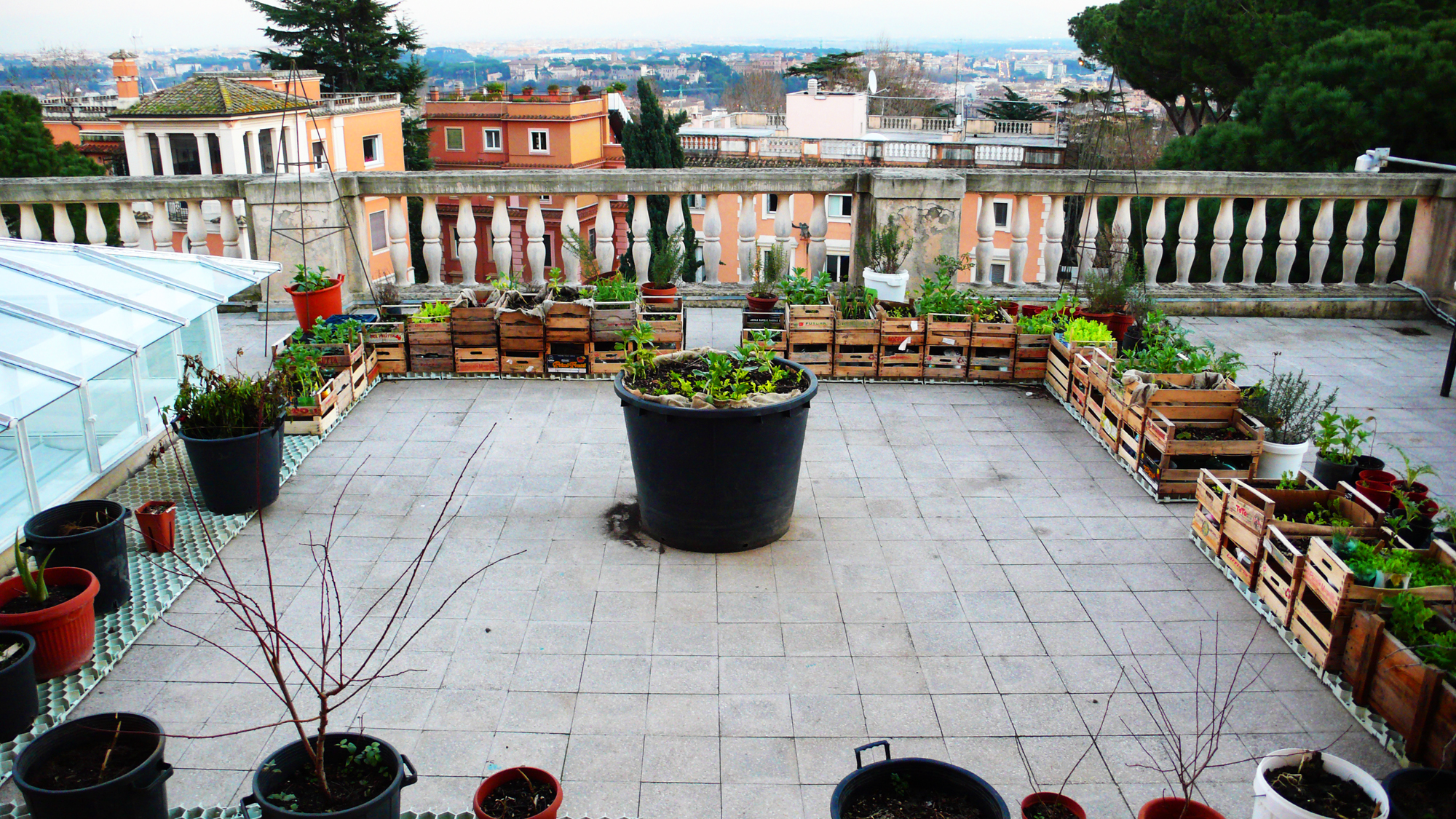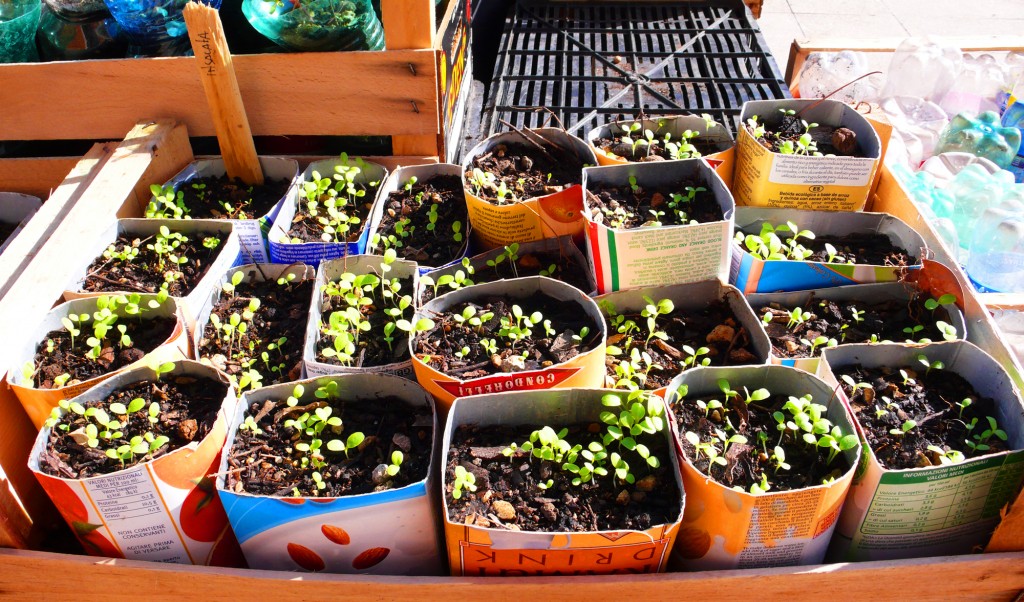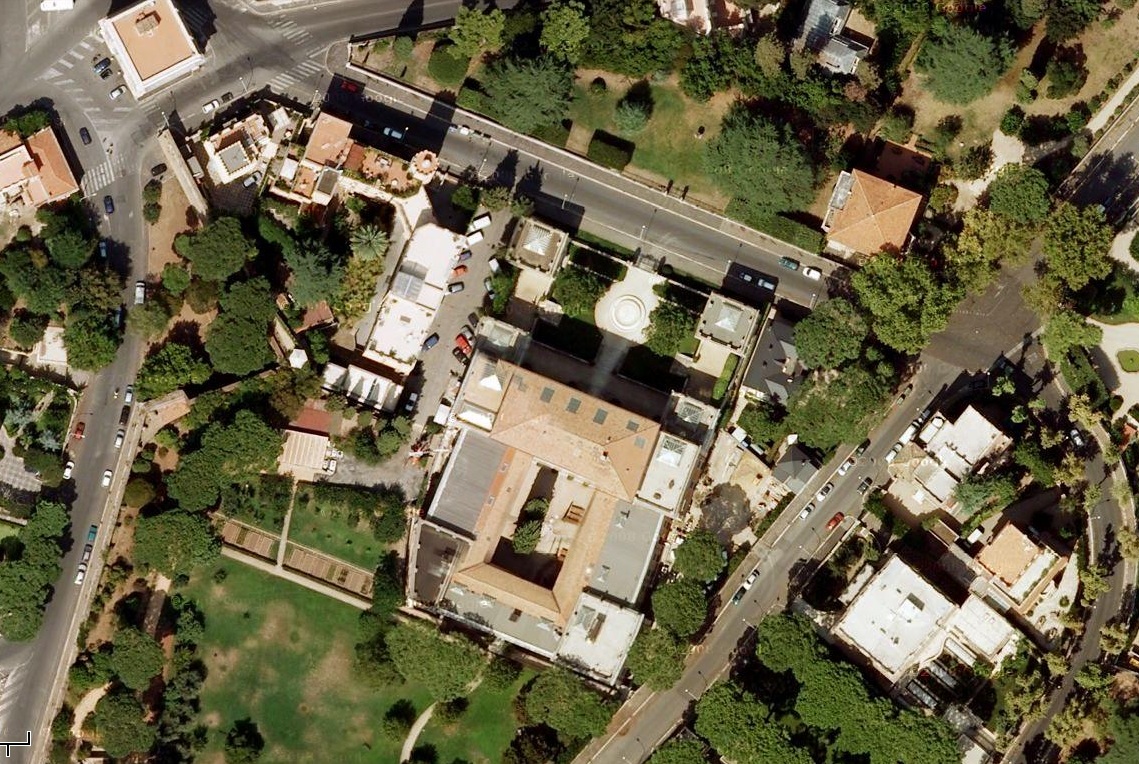In Edible Estates #10, Fritz Haeg has organized a farm on the rooftop of the American Academy in Rome. Using containers sourced from the the building (plastic bottles, paper cartons, cardboard boxes, etc.), and a worm bin turns food scraps from the residents into worm casting, the garden relies heavily on the waste products of the Academy to nourish the vegetable garden which in turns feeds the inhabitants.
A bottom-up venture in a literal sense, Edible Estates #10 takes Haeg’s vegetable garden to the roof. The scale of the operation is approachable for the hobbyist gardener. The material process of waste to compost to fertilizer and containers to pots and planters make the project a very accessible prototype for the unexperienced but aspiring grower.
SOURCE: http://www.fritzhaeg.com/garden/initiatives/edibleestates/rome.html
EDITOR’S NOTE: Empty plastic bottles, paper cartons, wood fruit crates, burlap sacks, cardboard boxes, and plastic containers are used for starting seeds and creating small mobile planting beds. A compost worm bin turns kitchen scraps into fertile worm casting compost, and later elements of project may include bee and bat accommodations, rainwater catchment, laundry lines, and other modest homesteading strategies possible on any Roman terrace.








